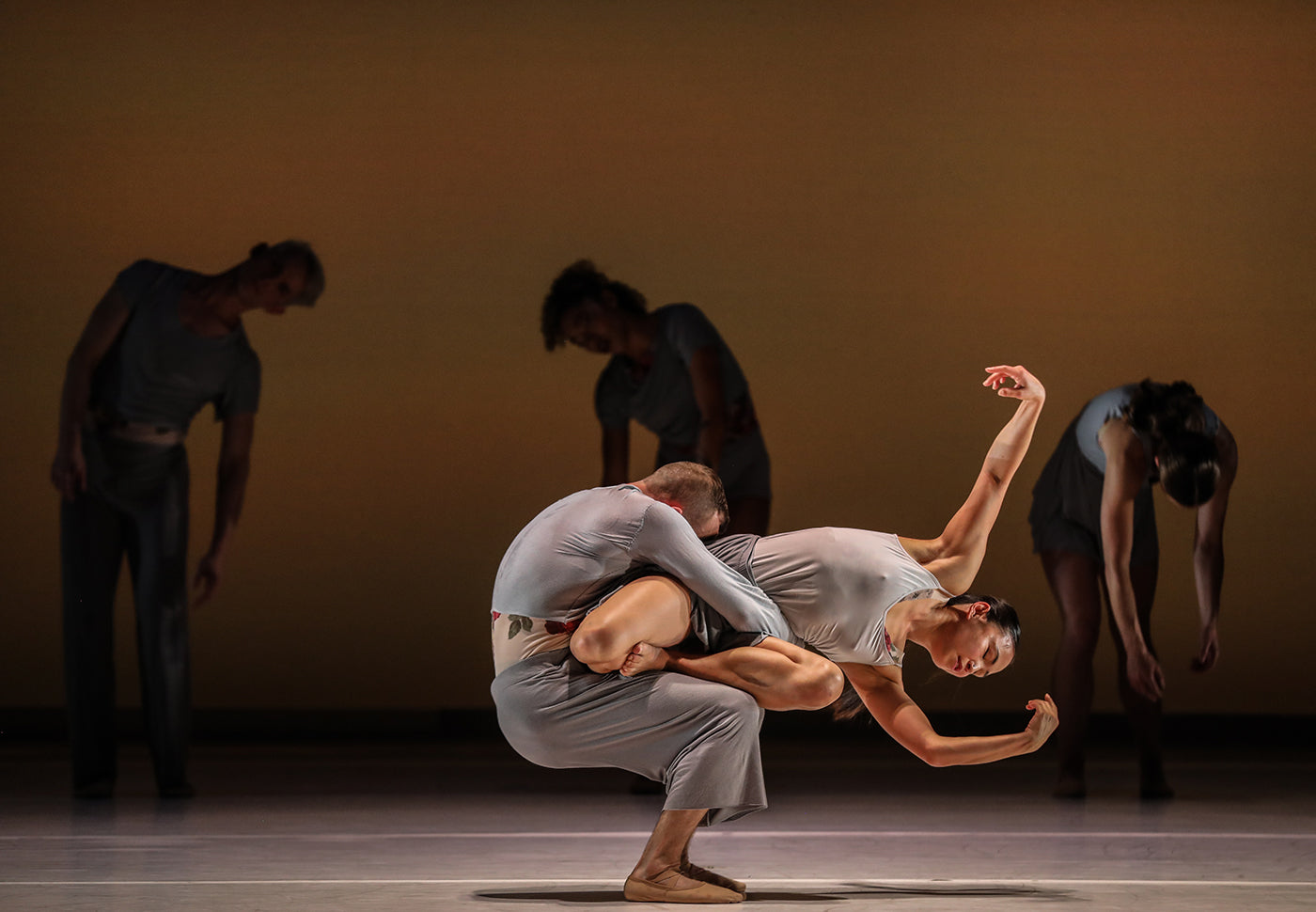A work of profound complexity and emotional intensity, this three-act ballet brings into sharp focus themes of freedom and confinement, of living and creating under tyranny and oppression. It’s an important and deeply personal artistic statement for Russian-born Ratmansky, who has had a life-long admiration, even reverence, for Shostakovich.
Co-commissioned by American Ballet Theatre and San Francisco Ballet, “Shostakovich Trilogy” was completed in 2013. After a three-year hiatus, ABT revived this work for its current season at the Metropolitan Opera House.
Mixing cheers with tears, the first section of the ballet, “Symphony #9” offers a rich mosaic of visual images and changing moods that allude to post-war Soviet life with its joyful Victory Day marches and painful memories of Stalin’s purges.
As the title suggests, this part of the trilogy is set to Shostakovich’s Symphony No. 9 in E Flat Major, Op. 70, an unusually brief composition in which wicked humor and irony mingle with melancholy and poetic lyricism. (The symphony was meant to be the “Glorious Soviet Ninth”—an anthem-like masterpiece of epic grander for a huge orchestra, a chorus and soloists to celebrate the end of the Second World War. It was supposed to be an apotheosis to Stalin. An act of artistic rebellion, Shostakovich’s lighthearted composition was certainly not what Stalin had ordered. Shortly after the symphony’s premiere, in 1945, it was deemed ideologically weak and banned for more than a decade. Shostakovich’s life though was miraculously spared.)
The ballet starts on a gleeful note. To the sounds of a sassy march, a male soloist (Craig Salstein) is happily cavorting about the stage with a group of his friends, now flying sideways in their arms, now joining them in a merriment that vividly echoes Shostakovich’s cartoonish and upbeat melodies. He is later joined by a girl (Stella Abrera), who is as joyful as everyone else, playing her invisible drums and adding to a prevailing sense of euphoria. Music and movement brim with energy and exhilaration; the elaborate groupings form and dissolve with kaleidoscopic rapidity; and everyone seems to be moving with a speed of light.
Then suddenly the atmosphere darkens and an inescapable feeling of impending doom creeps in. The music becomes achingly sad, occasionally penetrated by the ominous shrieks of woodwinds. The new couple (Devon Teuscher and Marcelo Gomes) appears onstage. They seem calm and composed but you can sense their apprehension. As a melancholic waltz lulls the theater, the dancers lose themselves in a soft, liquid flow of movement, yet their duet is no love story. Again and again, they turn their heads with suspicion, as if afraid of being constantly watched, their facial expressions changing from placid to terrified. In one scene, he picks her up and gently cradles in his arms, like a baby, hoping to console her. At the end, it feels as though their energy spirals down and they sink to the floor, slowly and unwillingly, as if being broken piece by piece. It’s a devastating image that later in the ballet is reprised by other dancers.
“Symphony #9” ends in a wild frenzy, bringing onstage the entire ensemble, with a soloist (Joseph Gorak) spinning with a storm-like intensity as if trying to set himself free from invisible forces that keep pulling him down. Yet in the final moment, as the music swells, he too drops on the floor, exhausted, broken, and incapable to go on.
The following “Chamber Symphony” is the beating heart of the triptych. Here the choreography is less abstract and more narrative. More than anything else, it’s about despair, about being caged and unable to find the way out.
The main protagonist (the superb James Whiteside) can be perceived as Shostakovich in particular or as a persecuted artist in general. In his harrowing solo, the man is turning and twisting and constantly pulling his body up, as if being submerged deep underwater, suffocating and desperately trying to get to the surface, gasping for air and reaching for light.
He is surrounded by his fellow friends, but they are too in a state of perpetual distress. As the dance unfolds, the hero meets three different women (Sarah Lane, Isabella Boyston and Hee Seo) who represent his romantic interests, but none of the relationships seems to be a happy one. At the end, as the ensemble forms a magnificent tableau, he trots off the stage, visibly shrunk and broken—a chilling reminder that, under the totalitarian rule, art can be a matter of life and death. (It’s a complex, powerful role; and Whiteside was spellbinding in it, his performance sending shivers down my spine.)
The final section of the ballet, “Piano Concerto #1,” is steeped in red. The two leading ballerinas (Christine Shevchenko and Maria Kochetkova) are dressed in crimson leotards; the corps de ballet, in slick costumes of grey and red. From the start, the heroic air envelopes the increasingly propulsive action onstage, but a triumphant finale it is certainly not. The virtuosic choreography looks deliberately agitated and hectic; and the somber imagery (at one moment, Shevchenko motherly wraps her arm around Kochetkova as if protecting her from immediate threat) keeps reminding us of the ever-present danger and dread.
There is a lot to take in on the first viewing—enigmas and veiled meanings are always present in Ratmansky ballets; yet one thing is certain: “Shostakovich Trilogy” is a fascinating, significant ballet and a testament of the choreographer’s immense artistic prowess.
Smartly conceived backdrops by George Tsypin, featuring fragments of Soviet paraphernalia, and attractive costumes by Keso Dekker contributed to the striking visual effect of the entire production. ABT’s orchestra did a fairly good job under the baton of Charles Barker, excelling particularly in “Chamber Symphony” and “Piano Concerto #1,” in which pianist Barbara Bilach was an admirable soloist.









comments